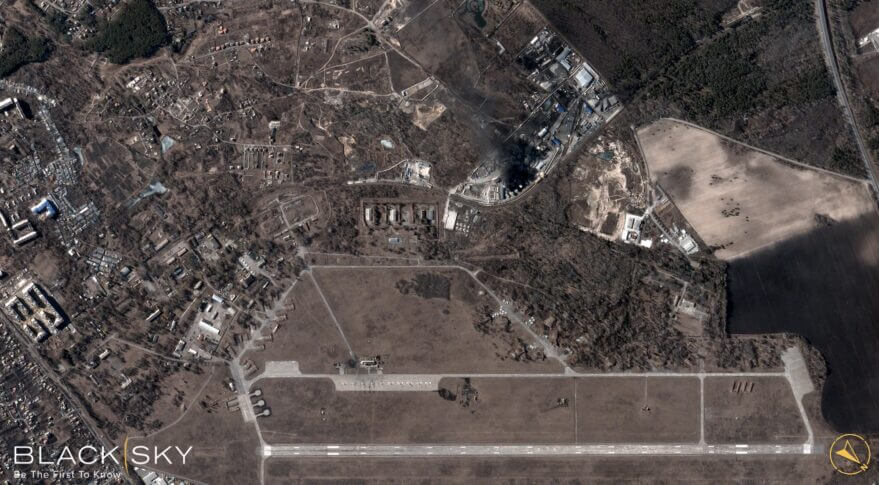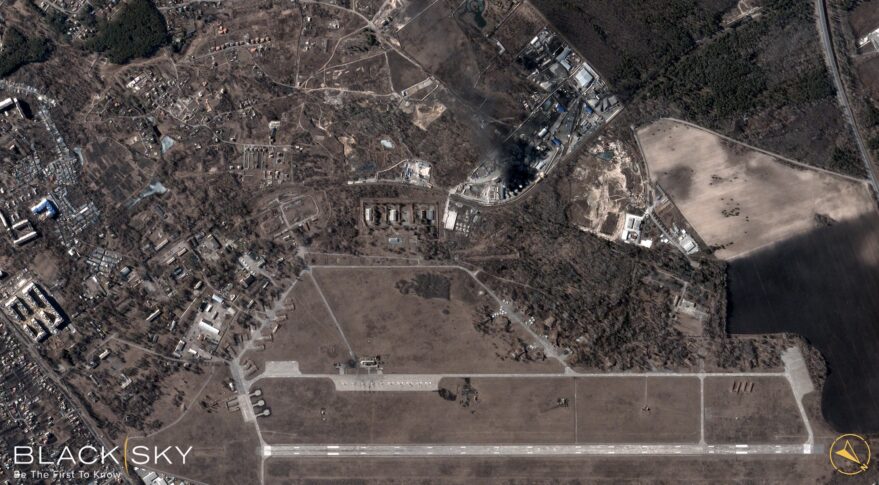
Op-ed | Advances in commercial space having geopolitical and national security implications (Image Credit: Space News)

The war in Ukraine is perhaps the first where a mature commercial space industry existed and had an appreciable effect on the understanding of the war, if a smaller impact on the conduct of the war itself. It is perhaps a validation of sorts for the capabilities many in the commercial space sector long highlighted and, at the same time, advocated for the national security space enterprise to embrace.
A growing commercial space industry had slowly and steadily built up a suite of capabilities that, while in regular use, were waiting for a breakout moment. An expanding open source intelligence community with leading actors like Bellingcat have provided a model for investigation and verification of claims.
Meanwhile, the Biden administration leaned very far forward into the information and intelligence war with Moscow, releasing information in advance of the war, hoping to interrupt the Kremlin’s decision-making cycle as well as drive NATO and European unity.
The diversity of the industry’s capabilities are on full display with everything from commercial imaging and remote sensing to radio signal monitoring and more. Unsurprisingly, the demand for these types of capabilities has surged and the government surged its acquisition of such capabilities, more than doubling the procurement in the run-up to the war.
Beyond the government, journalists, activists, open source intelligence analysts, and more all sought the high-resolution image and data sets commercial companies like Blacksky, Planet, and Maxar were able to provide on short notice. The panoply of satellites in orbit meant frequent overflights of key targets, allowing rapid verification of claims or debunking of propaganda. HawkEye 360 tracked Russian activities on-orbit as well as radio and GPS jamming on-the-ground while the aforementioned imaging companies helped identify Russian war crimes, such as those which occurred around Bucha. Investigating and prosecuting such crimes will never be the same.
At the same time, space companies are becoming more active participants. While not parties to the war itself, their involvement vividly illustrated the potential spillover. It is becoming increasingly difficult to hide behind the “commercial” label when their work has geopolitical and national security implications. Hackers targeted Viasat terminals in Ukraine to deny the country satellite broadband. Elon Musk’s Starlink sent “thousands” of its own terminals to Ukraine to connect to the company’s growing internet broadband network.
This is a particularly important point on which to reflect. While analysts and researchers have long considered the potential targeting of commercial companies or their services in an active conflict, this is perhaps the first time in the 21st century when those companies were engaged, tangentially, in an inter-state war, in which they could be targeted. While Russia’s attacks appear, thus far, to be limited to the hack of Viasat (it is still too early to tell), this is not to say it will continue to be the case in the future.
Here, close cooperation, coordination, and communication between U.S. Space Command and the private sector is needed. This must go beyond the close-approach notices, but be an active discussion about what such cooperation looks like in a conflict and what obligations both parties have to each other beyond those enumerated in contractual arrangements. More importantly, the government must decide what red-lines are for targeting commercial capabilities that are used in national security missions and, at the same time, communicate those red-lines to future adversaries.
Looking to the future, the investment in and development of a robust suite of next generation space-based and space-enabled capabilities is of paramount importance. We should be wary of assuming that future conflicts will be so benign in space. Were China to advance on Taiwan, it is likely that Beijing would field anti-satellite capabilities, be it jamming, kinetic, or cyber-attacks. Both the Secure World Foundation and Center for Strategic and International Studies recently updated their surveys of counter-space capabilities, which illustrate the diversity of anti-space capabilities available to America’s adversaries.
Developing smaller satellites with distributed capabilities across a larger constellation will lead to increased resilience, and the loss of one satellite will not be significant. Cybersecurity must be at the heart of these developments, especially including the ground segment. Hackers will look to find the weak link in any network, and it is less likely to be in space and more likely to be found between the keyboard and chair.
Fully exploiting space will necessitate the continued development and exploitation of a healthy launch market that encompasses everything from heavy lift (SpaceX, United Launch Alliance, and soon, Blue Origin) through to small launch (Rocket Lab, Virgin Orbit and others). A healthy launch ecosystem with multiple launch locations augmented by a diverse architecture would mean that any losses could be swiftly replaced or, should additional capabilities be needed such as over the South China Sea, an asset could be placed into orbit. Additional development in maneuverable satellites and satellite barns on orbit will also afford increased resilience.
Commercial space is playing a significant role in the war in Ukraine and will undoubtedly do so again in the future. It is imperative that we draw the right lessons from this conflict and prepare for what could come next.
Joshua Huminski is director of the National Security Space Program at the Center for the Study of the Presidency & Congress and a George Mason University National Security Institute fellow. He can be found on Twitter @joshuachuminski








